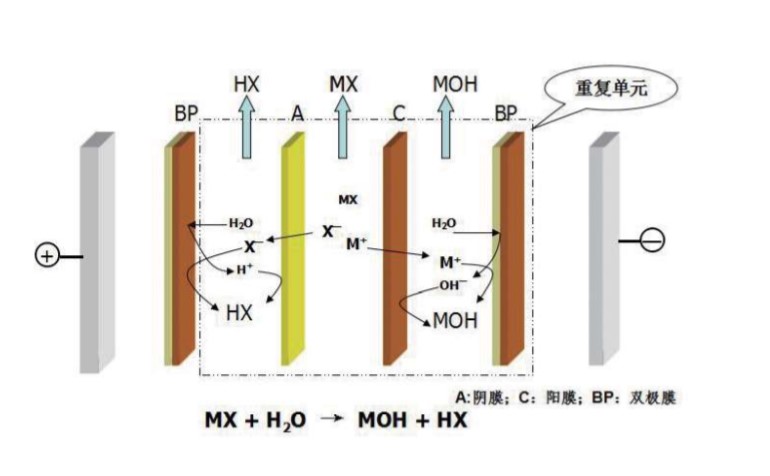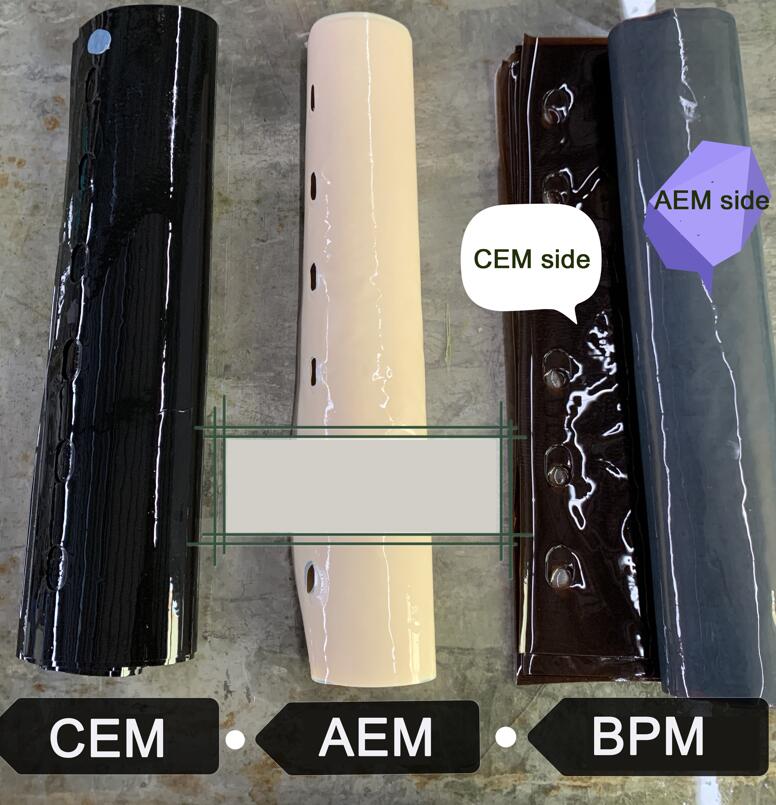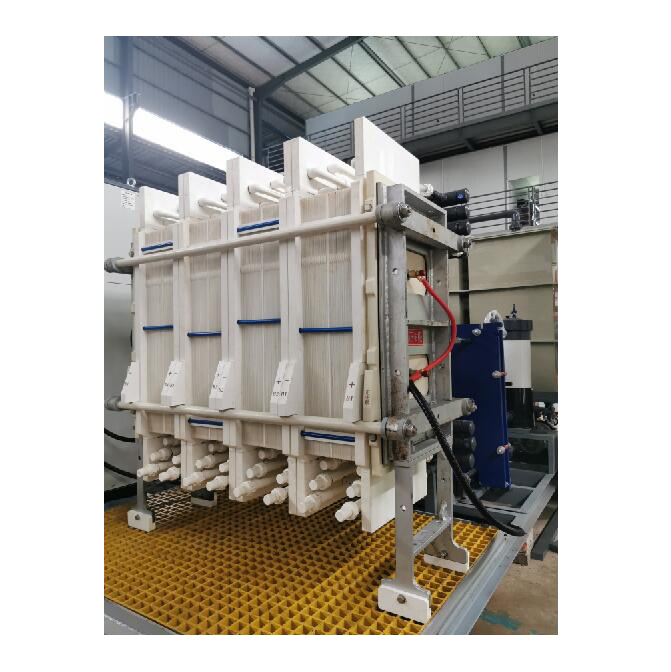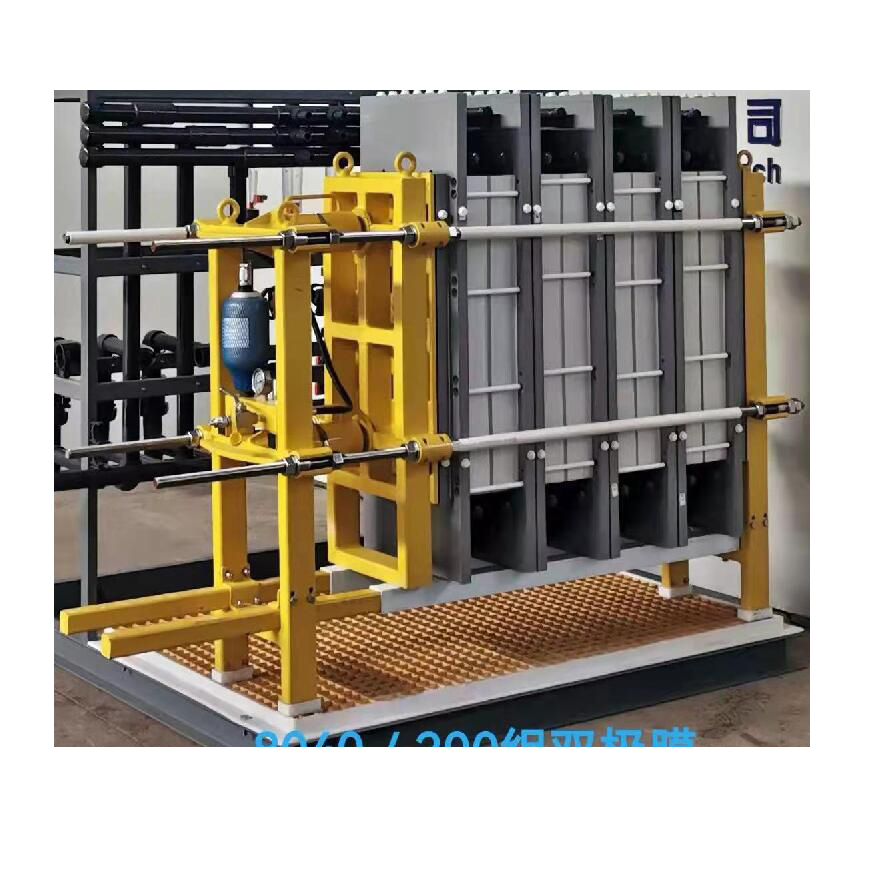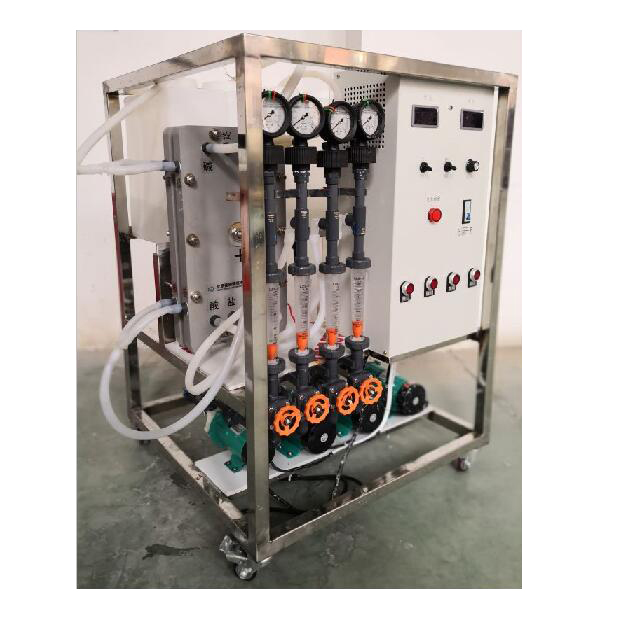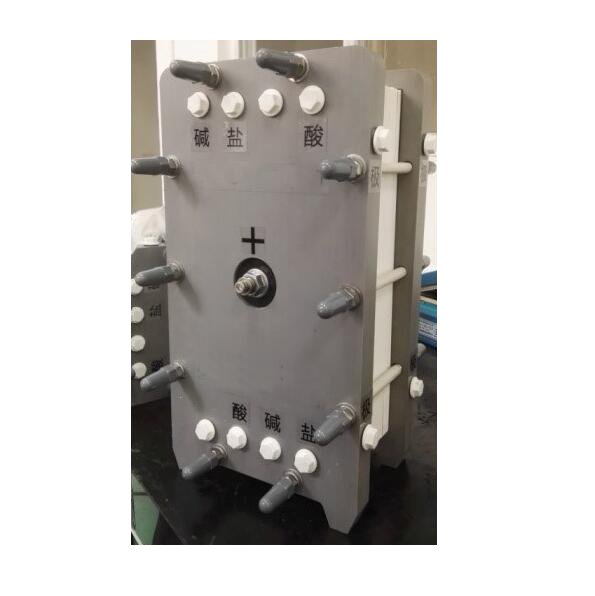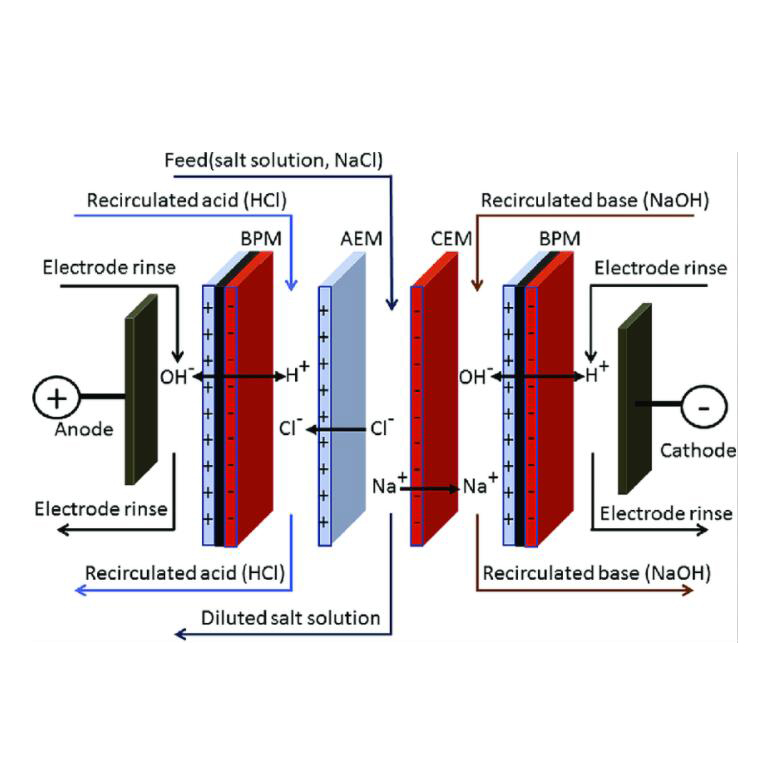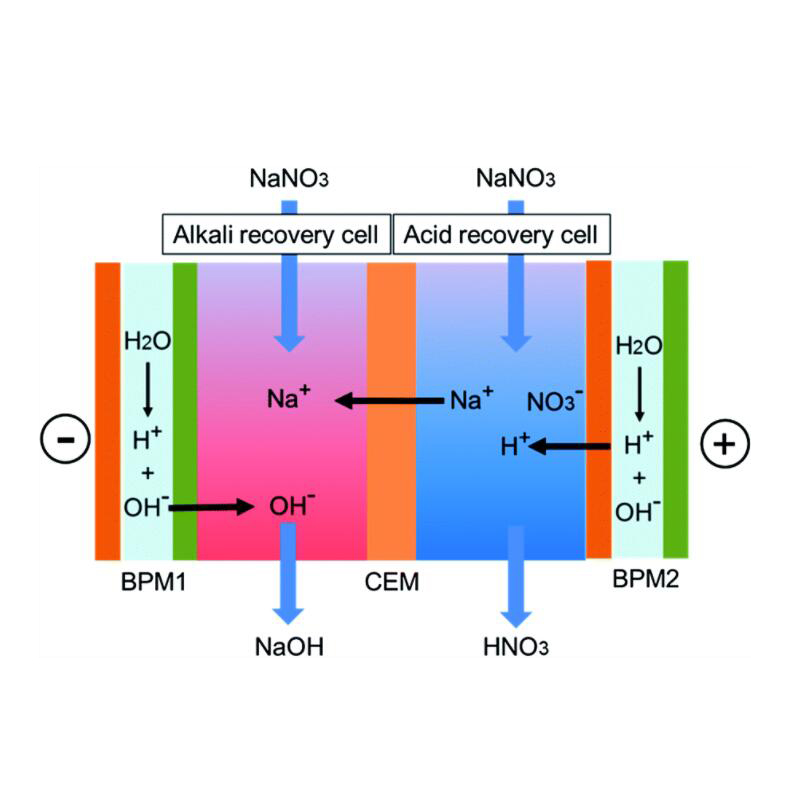About
Bipolar Membrane Stack BPMS

Under the action of a DC electric field, the bipolar membrane can dissociate water and obtain hydrogen ions and hydroxide ions on both sides of the membrane. A bipolar membrane electrodialysis system that combines bipolar membranes with other anion and cation exchange membranes can convert salts in aqueous solutions into corresponding acids and bases without introducing new components, this method is called bipolar Membrane Electrodialysis. Bipolar membrane electrodialysis is not only used for the preparation of acids and bases, but if it is cleverly combined with unipolar membranes, it can achieve a variety of functions and be used in many fields.
The bipolar membrane stack is composed of the bipolar membrane,the anion membrane and the cation membrane constitute a three-chamber of acid, alkali and salt. The anion of the salt passes through the anion membrane and combines with the H+ ion generated by the bipolar membrane to form an acid. On the other hand, the cation passes through the cation exchange membrane and the double The OH-ion generated by the polar membrane combines to form a base, and the process is equivalent to the reverse reaction process of the neutralization reaction.
